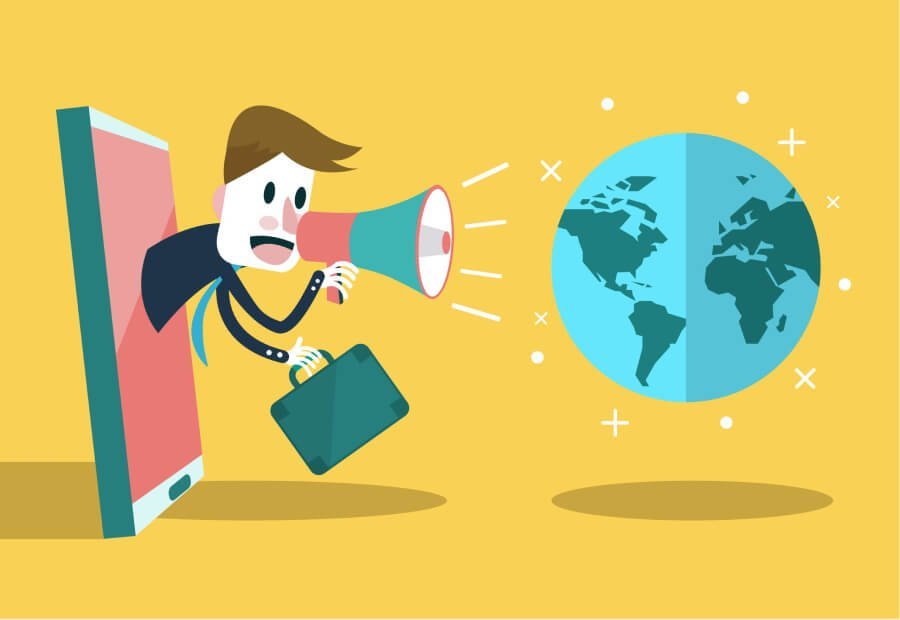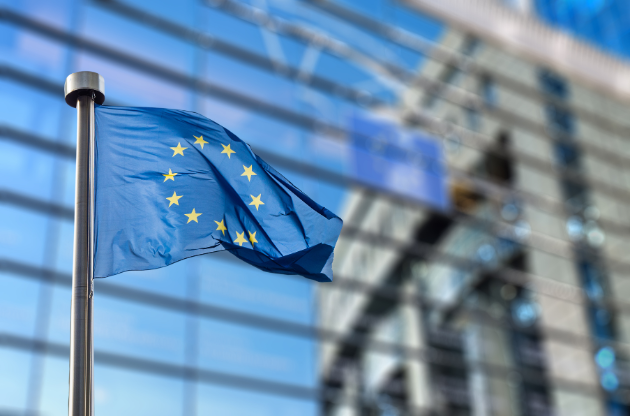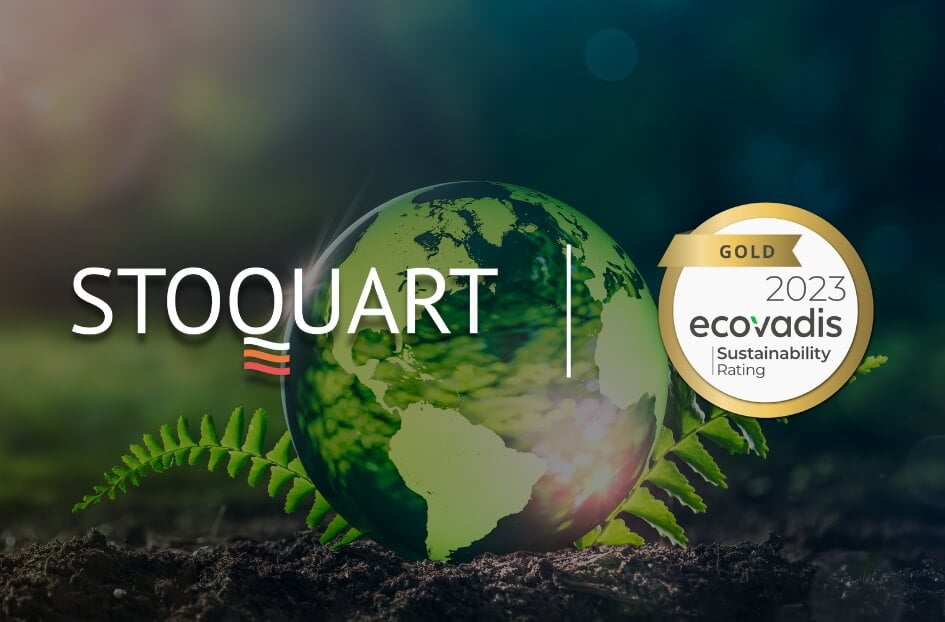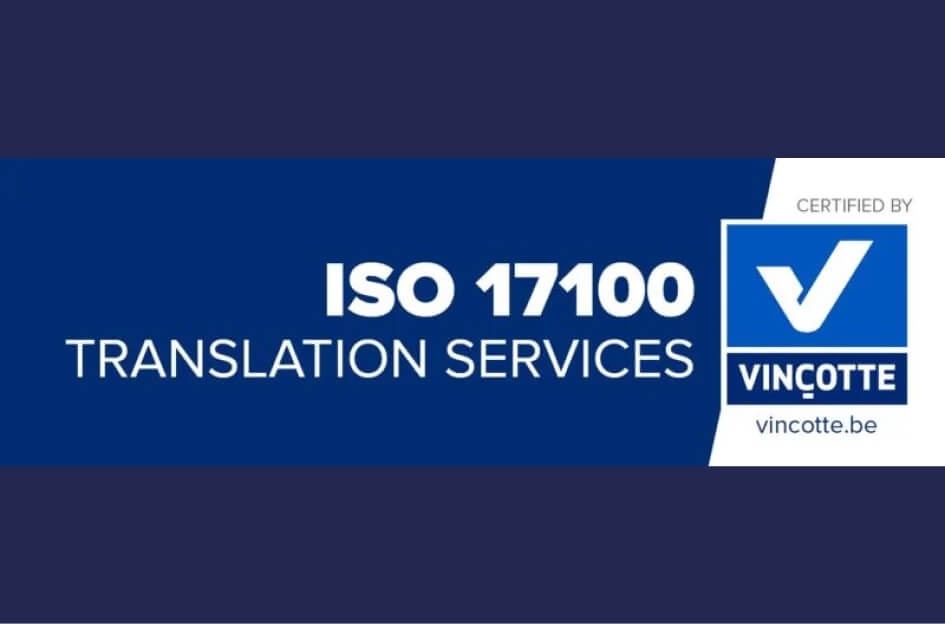Professionally translating marketing content ensures that slogans, advertisements, and promotional materials resonate with a global audience. It goes beyond just converting words; it requires linguistic expertise and cultural understanding to effectively engage target markets around the world.
Marketing copy, or translating product descriptions and marketing assets, standard translation won’t cut it. A successful marketing translation captures the essence of your brand while tailoring it specifically for different markets. By leveraging linguistic nuances and local preferences, you can create impactful campaigns that drive sales.
So how to ensure your marketing message, doesn’t get lost in translation? In this guide, we’ll explore the intricacies of marketing translation learn how navigate diverse markets successfully. Let’s dive in!
Understanding the Importance of Marketing Translation:
Expanding Your Reach and Connecting with International Customers
Marketing translation is a crucial aspect of any business looking to expand its reach and connect with international customers. By translating marketing content into different languages, businesses can effectively communicate their products or services to a global audience. This allows them to tap into new markets, increase brand awareness, and ultimately drive sales.
Hiring professional marketing translators is essential. These experts have the linguistic skills and cultural knowledge required to accurately convey your brand translation company’s message in different languages. They understand the nuances of each target market, ensuring that your marketing materials are culturally appropriate and resonate with local audiences.
Culturally Appropriate Messaging for Target Audiences
One of the key benefits of marketing translation is culturally appropriate messaging for target audiences. Every culture has its own language and unique set of values, beliefs, and customs shaping its consumer behavior. You can build trust and establish a strong connection with potential customers by tailoring your marketing messages to align with these cultural nuances.
For example:
In some cultures, direct language may be preferred while others may respond better to more subtle messaging.
Colors can also carry different meanings across cultures. For instance, while red symbolizes luck in China, it represents danger in Western countries.
Similarly, imagery and symbols may hold different connotations in various cultures. Understanding these nuances helps avoid misunderstandings or offensive content.
You can create content that resonates with your target audience on a deeper level by taking these factors into account during the marketing translation process.
Avoiding Misunderstandings and Credibility Loss
Poorly translated marketing content can lead to misunderstandings that not only hinder effective communication but also damage credibility. When translations are inaccurate or lack cultural sensitivity, potential customers may misinterpret your messages or even find them offensive. This can result in negative perceptions of your brand, leading to missed business opportunities and a damaged reputation.
To avoid such pitfalls, it is crucial to work with experienced marketing translators who can capture the essence of your brand while adapting it for different markets. These professionals ensure that your marketing materials are not only linguistically accurate but also culturally sensitive, maintaining the integrity of your brand across borders.
Seizing Global Business Opportunities
Expanding into international markets presents significant business opportunities. However, without proper marketing translation, these opportunities can easily be missed. By using marketing translation services cost investing in high-quality translations, you can effectively communicate the value of your products or services to potential customers worldwide.
The Tricky Nature of Translating Slogans in Marketing:
Translating slogans: A challenging task for marketers
Translating slogans is no easy feat. Unlike straightforward text, slogans often rely on wordplay, cultural references, or rhymes that may not easily translate into other languages.Ensuring the success of a slogan adaptation requires careful consideration of linguistic nuances and cultural sensitivities.
Maintaining the original message while adapting to different languages
A successful slogan translation project goes beyond a literal word-for-word conversion. It aims to maintain the essence and impact of the original message while adapting it to resonate with audiences in different markets. This process involves understanding not only the words themselves but also the underlying emotions and cultural context associated with them.
The art of transcreation: Creatively adapting slogans for diverse markets
To overcome the challenges posed by translating slogans, professional translators employ creative techniques such as transcreation. Transcreation involves recreating the slogan in a way that captures its intended meaning while considering local idioms, cultural references, and linguistic peculiarities.
Here are some strategies used by translators during transcreation:
Cultural research: Thoroughly researching the target market’s culture helps translators gain insights into what resonates with local audiences. This includes understanding popular idioms, historical references, and social norms.
Wordplay adaptation: Adapting wordplay from one language to another can be particularly tricky. Translators need to find equivalent expressions or create new ones that convey a similar effect or evoke similar emotions.
Rhyme and rhythm preservation: If a slogan relies heavily on rhyme or rhythm in its original language, maintaining these elements can be crucial for its impact. Translators may need to experiment with alternative words or structures that achieve similar poetic effects.
Brand voice consistency: While adapting slogans for different markets, it’s essential to ensure consistency with the brand’s overall tone and voice. Translators must strike a balance between localizing the slogan and preserving the brand’s identity.
Real-world examples of successful slogan translations
Several businesses have successfully navigated the challenges of translating their slogans for global markets. Let’s look at some notable examples:
Nike: Nike’s iconic slogan “Just Do It” has been effectively translated into different languages while maintaining its powerful message. In Japan, it was adapted to “Go For It,” which captures a similar spirit of determination.
Google: Google’s mission statement, “Don’t Be Evil,” had to be carefully translated into different languages, considering cultural nuances. In Japanese, it became “Be Good,” aligning with local values while retaining its essence.
Coca-Cola: Coca-Cola is known for its successful global marketing campaigns. Its timeless slogan, “Open Happiness,” has been translated into various languages using transcreation techniques to evoke similar emotions worldwide.
Examples of Successful International Marketing Translation Campaigns:
Coca-Cola’s “Share a Coke” Campaign
One prime example of a successful international marketing translation campaign is Coca-Cola’s “Share a Coke” initiative. The company cleverly adapted its slogan across various languages by using localized names on their bottles. Instead of simply translating the original slogan, Coca-Cola took a more personalized approach to resonate with consumers in different countries.
For instance, in Australia, where the campaign originated, Coca-Cola replaced its logo with popular Australian names such as “Sarah” and “Michael.” This strategy created a sense of connection and familiarity among Australian consumers, making them feel like the brand was speaking directly to them. The campaign’s success prompted Coca-Cola to expand it globally, customizing the names according to each target language.
In different countries around the world, people could find their own names or popular local names on Coke bottles. This personalized touch not only increased consumer engagement but also encouraged social sharing as people shared photos of themselves with their named bottles on social media platforms. By incorporating localized names into their marketing materials, Coca-Cola effectively bridged language barriers and established an emotional connection with consumers worldwide.
McDonald’s “I’m Lovin’ It” Slogan
Another notable example is McDonald’s iconic “I’m Lovin’ It” slogan. When expanding their marketing campaigns to different countries, McDonald’s faced the challenge of translating this catchy phrase while maintaining its positive and upbeat tone.
McDonald’s translated the slogan “I’m Lovin it” with “C’est tout ce que j’aime” for France and with “C’est ça que j’m” for the Canadian market. In Spanish-speaking regions like Mexico and Spain, it became “Me encanta,” meaning “I love it.” By tailoring the translation to fit the linguistic and cultural characteristics of each country, McDonald’s successfully maintained the essence of their slogan while making it relatable to consumers worldwide.

Strategies for Effective Marketing Translation: In-depth Market Research and Cultural Understanding
Thorough Market Research: Identifying Target Audiences and Local Preferences
Thorough market research is an essential first step. This involves delving deep into the target market to understand its unique characteristics, preferences, and behaviors. By identifying the target audience, marketers can tailor their translations to resonate with their intended customers.
Analyze demographic data such as age, gender, location, and income levels to conduct market research. This information creates a clear picture of your target audience. Consider psychographic factors like interests, values, and lifestyle choices influencing consumer behavior.
Once you have a comprehensive understanding of different language of your target audience, you can align your marketing translation strategy accordingly. For example:
Use language that appeals to specific age groups or demographics within the target audience.
Adapt messaging to suit different cultural contexts within the same market.
Tailor content based on regional preferences or dialects.
Cultural Understanding: The Key to Creating Relevant Content
In marketing translation, understanding the cultural nuances of the target market is crucial. A successful marketing translation project goes beyond mere word-for-word accuracy; it captures the essence of a message while considering cultural sensitivities and local customs.
To achieve this level of cultural understanding:
Dive into Values and Beliefs: Explore the core values and beliefs held by people in the target culture. This knowledge will help shape your messaging in a way that resonates with their worldview.
Embrace Humor and Idioms: Humor varies greatly across cultures. Familiarize yourself with humor styles prevalent in the target culture so that you can incorporate appropriate jokes or idioms into your translated content.
Avoid Taboos: Every culture has its own set of taboos—topics or symbols considered offensive or inappropriate. Be mindful of these taboos when crafting your marketing translations to avoid causing offense or alienating potential customers.
Collaborate with Native Speakers and Local Experts
In marketing translation, accuracy is paramount. Collaborating with native speakers or local experts ensures that your translated content captures the nuances of the target language and resonates with the intended audience. These individuals possess an innate understanding of their local culture’s language, idioms, and colloquialisms.
Here are some ways to collaborate effectively:
Hire professional translators who are native speakers of the target language.
Consult local experts or cultural consultants who can provide valuable insights into the target culture.
Engage focus groups or conduct surveys to gather feedback from members of the target audience regarding your translated content.
By involving native speakers and local experts in the translation process, you can ensure that your marketing materials are culturally accurate, relevant, and impactful.
Adapting Marketing Content to Local Market’s Cultural Preferences
Adapting visuals, colors, symbols, and messages
It goes beyond simply converting words from one language to another. Adapting marketing content involves tailoring visuals, colors, symbols, and messages to align with the cultural preferences of the target market. This is crucial for successfully reaching and engaging local audiences.
Consider cultural differences and nuances when creating marketing content. Colors can have different meanings in various cultures. For example, while white represents purity in Western countries, it symbolizes mourning in some Asian cultures. By understanding these cultural associations, marketers can choose appropriate color schemes that resonate with the local audience.
Symbols also play a significant role in marketing communication. A symbol that may be well-known or revered in one culture could be entirely unfamiliar or even offensive in another. For instance, using a thumbs-up gesture as a sign of approval might work well in Western markets but could be misunderstood as an insult in certain Middle Eastern countries. It is crucial to research and understand these cultural variations before incorporating symbols into marketing materials.
Considering holidays, traditions, and customs
To create content that feels familiar and relatable to the audience, marketers must consider local holidays, traditions, and customs. These cultural aspects shape people’s lives and influence their preferences. Incorporating them into marketing campaigns helps establish a connection with the target market.
For instance, during Chinese New Year celebrations in China or Lunar New Year festivities across East Asia, brands often release special editions of their products featuring traditional motifs associated with luck and prosperity. By acknowledging these important events through localized marketing efforts such as limited-edition packaging or themed promotions aligned with local customs like gift-giving practices during festive seasons enhances brand appeal.
Understanding local customs can help avoid potential pitfalls or offensive messaging. For example, some cultures have specific dietary restrictions due to religious beliefs or health reasons. When marketing food products, it is essential to ensure that the content respects and caters to these dietary preferences.
Localization beyond translation
Localization of marketing campaigns goes beyond translation. It involves adapting product names, packaging, advertising copy and imagery for specific markets. A literal translation may not capture the essence or appeal to the local audience effectively.
Product names should be carefully chosen to avoid unintended meanings or negative associations in different languages. For example, Chevrolet faced challenges when launching their car model “Nova” in Spanish-speaking countries since “no va” translates to “doesn’t go.” This highlights the importance of linguistic research and understanding cultural connotations associated with specific words.
Packaging design also requires localization. Different cultures have unique aesthetic preferences, and what appeals to one market may not resonate with another. By adapting packaging designs to reflect local tastes and trends, brands can increase their chances of success in foreign markets.
Imagery plays a crucial role in a marketing campaign as well. Using visuals that feature people from the target culture enhances relatability and helps consumers envision themselves using the product or service. Localizing video content by incorporating actors who represent the target audience adds authenticity and strengthens emotional connections.
Streamlining Workflow for Collaborative Marketing Translation on Social Networks
Utilizing Collaborative Tools
Utilizing collaborative tools is essential for streamlining the workflow. Project management software or cloud-based platforms can greatly enhance communication among translators, marketers, and stakeholders. These tools provide a centralized space where everyone involved in the translation process can collaborate efficiently.
By using project management software or cloud-based platforms, teams can easily assign tasks, track progress, and exchange files. Translators access the source content from these platforms directly and eliminate back-and-forth emails or file sharing. This streamlined approach saves time and ensures that all team members are working on the most up-to-date version of the content.
Establishing Clear Guidelines and Style Guides
To maintain consistency in tone, terminology, and brand voice across different languages, it is crucial to establish clear guidelines and style guides for technical translation. These guidelines serve as a reference for translators to follow when translating marketing content.
Style guides outline specific rules regarding language usage, formatting preferences, and stylistic choices. They help ensure that translations align with the brand’s identity and maintain a cohesive message across all languages. By providing translators with detailed guidelines upfront, marketers can avoid potential misunderstandings or inconsistencies in translated content.

Leveraging Social Media Platforms
In addition to using collaborative tools, leveraging social media platforms directly plays a significant role in collaborative and marketing translation efforts. Social media offers businesses an opportunity to engage with international audiences while simultaneously monitoring feedback for continuous improvement.
By maintaining active social media accounts across various platforms such as Facebook, Twitter, Instagram, and LinkedIn in different languages, businesses can reach out to their target markets effectively. Regularly posting translated content allows companies to connect with their audience on a more personal level while showcasing their commitment to serving diverse communities.
Furthermore, social media provides valuable insights into customer preferences and behaviors through comments and reactions to posts. This feedback can be used to refine marketing strategies and tailor translations to better resonate with the target audience.
Embracing Machine Translation
While human translation is crucial for maintaining accuracy and capturing nuances, machine translation can be a valuable tool in streamlining the workflow. Translation agencies use machine and translation services to speed up the process.
Improved machine translation algorithms form a solid foundation for translators’s work. However, human review and editing are necessary to ensure quality and precision in the final translated content.
Conclusion
Marketing translation plays a crucial role implementing marketing translation and in achieving global success for businesses. By accurately translating marketing materials, companies can effectively communicate their brand message and connect with international audiences.
Understanding the importance of marketing translation is essential for businesses aiming to expand their reach beyond borders. It ensures that promotional content resonates with target markets, increasing the likelihood of successful market penetration.
Translating slogans in marketing can be particularly challenging due to cultural nuances and linguistic differences. However, when done right, it can lead to memorable and impactful campaigns that resonate with consumers worldwide.
Numerous examples demonstrate the power of successful international marketing translation campaigns. Companies such as Coca-Cola, Nike, and McDonald’s have effectively adapted their messaging to local cultures, resulting in increased brand awareness and customer engagement.
To achieve effective marketing translation, thorough market research and cultural understanding are vital. By gaining insights into target markets’ preferences and values, businesses can tailor their content accordingly and avoid potential pitfalls or misunderstandings.
Adapting marketing content to match the cultural preferences of local markets is key to building strong connections with consumers. This approach allows brands to establish trust and credibility while showcasing an understanding of local customs, traditions, and language nuances.
Streamlining workflow for collaborative marketing translation on social networks enhances efficiency and facilitates seamless communication among team members. Leveraging digital platforms enables real-time collaboration while ensuring consistency across different channels.
In conclusion, investing in high-quality, marketing translation services is essential for businesses seeking global success. It enables effective communication with diverse audiences while fostering brand loyalty across different markets. By prioritizing accurate translations that resonate culturally, companies can unlock new opportunities for growth and expansion.
FAQs
Q: How does marketing translation impact business growth?
Marketing translation plays a vital role in business growth by a translation provider enabling effective communication with international audiences. It helps build brand awareness, engage customers from different cultures, and increase market penetration.
Q: Can inaccurate translations harm a company’s reputation?
Yes, inaccurate translations can harm a company’s reputation. They may lead to misunderstandings, misinterpretations, or even offend target audiences. It is crucial to prioritize accurate and culturally sensitive translations to maintain a positive brand image.
Q: What are some common challenges in marketing translation?
Some common challenges in marketing translation include adapting slogans, idiomatic expressions, and cultural references across different languages. Ensuring consistency in tone of voice and maintaining brand identity can be complex when translating marketing materials.
Q: How can businesses ensure effective marketing translation?
Businesses can ensure effective and professional marketing translation services by conducting thorough market research, understanding the target audience’s cultural preferences, and collaborating with professional translators who specialize in marketing content. Regular communication and feedback loops also contribute to successful outcomes.
Q: Are there any benefits to using social networks for collaborative marketing translation?
Yes, using social media translation and networks for collaborative marketing translation offers several benefits. It enhances workflow efficiency by allowing real-time collaboration among team members located in different parts of the world. It also facilitates seamless communication and ensures consistent messaging across various social media platforms.
Q: Can you provide examples of companies that have excelled in international marketing translation?
Certainly! Coca-Cola, Nike, McDonald’s, and Apple have successfully adapted their global marketing efforts and campaigns to local cultures worldwide. They effectively translate their brand message to reach global success.




